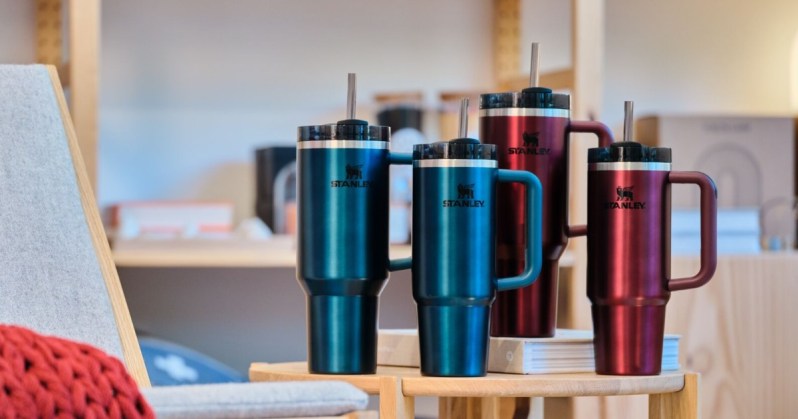The back-and-forth sways and seemingly random twists of trends in pop culture are fickle and peculiar. While we can always count on the masses to be eagerly chattering about new music and movies, it’s the “stuff” that baffles us. The hot items we all scramble to have in our possession, associating with them things like popularity and status. Sure, there are the big names in merchandise we love to tote around on our wrists or drape over our shoulders, dropping subtle hints of taste and wealth. These are the items that cost thousands for no other reason but their well-stitched, cleverly placed logos. But every once in a while, an obscure, non-luxury object steps into the spotlight that seems to greedily hold the public rapt. In recent years, that item has been – oddly – a cup.
While we all understand the importance of adequate hydration, this surge of water tumbler devotion has been nothing short of jarring. Fans of popular brands will wait in lines for hours on end, hoping to score yet another for their collection, its only difference being a slightly different hue from the several they already own. It’s an odd obsession, to be sure. And while we could dissect the reasons behind the craze (social media influencers), that’s a story for another day.
Today, we’re looking at two of the most popular brands of to-go tumblers – Stanley and Yeti – and breaking down which of the two is the more deserving of all this mania.
The Stanley Quencher
Arguably the more popular of the two brands, Stanley has developed a brand that’s every bit as much a fashion accessory as it is a tool to hold a beverage. The Stanley Quencher is undoubtedly enjoying its time in the warm rays of TikTok sunshine, but how does it hold up as an actual tumbler? Does it matter, we wonder?
It turns out the Stanley Quencher is actually a pretty great little cup. Available in five sizes, the Quencher has a double-wall, vacuum-insulated stainless steel body that keeps cold drinks cold for up to 11 hours and hot drinks hot for up to seven hours. It also boasts an airtight lid, is dishwasher safe, can be used with or without the included straw, and can be personalized…if that’s your thing. The large handle is also extremely comfortable, and we do appreciate the wide range of colors.
The Yeti Rambler
The Yeti Rambler is made from 18/8 dent-resistant, dishwasher-safe stainless steel and keeps beverages cold for hours. We love the ever-so-slightly-more rough-and-tumble design, making the Rambler feel sturdier and less like something to compliment our outfit. Having said that, we do appreciate the many DuraCoat peel-resistant colors that refuse to crack or peel, even after frequent trips to the dishwasher.
While there are fewer sizes than the Stanley Quencher, we love that handles are included in all of the Rambler’s dimensions, not just the more extensive options. We also appreciate the shatter-resistant straw of the Rambler.
The winner
The differences between these two tumblers are subtle, to be sure, and both brands make a great product. Cynicism aside, there are actually some big annoyances that come with cheap water tumblers that you just don’t get with these two. Both are sweat-proof, leaving hands completely dry and non-slippery. Both seem to fit smoothly into many sizes of car cup holders; both have comfortable handles and dishwasher-safe parts. These are the best things we can ask for in a water tumbler.
But if we’re after a winner, our pick is the Yeti Rambler. The Rambler is slightly lighter than the Stanley Quencher, yet somehow simultaneously feels more sturdy. And while both brands did a fine job of keeping our beverages icy cold, Yeti did stay colder longer, if only by a hair.
So, while we know that the Stanley Quencher is the more popular choice – at least according to TikTok – we prefer the Yeti Rambler.







